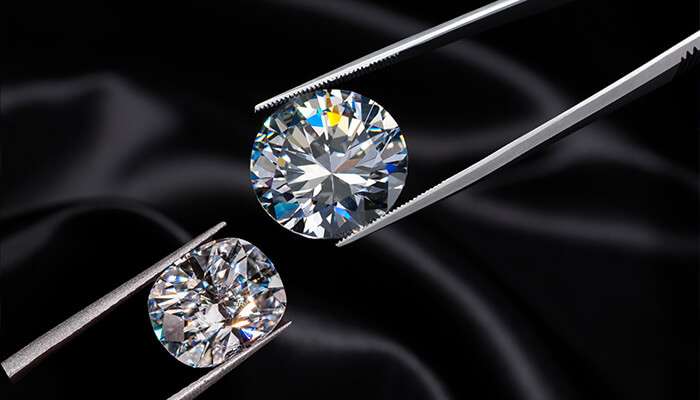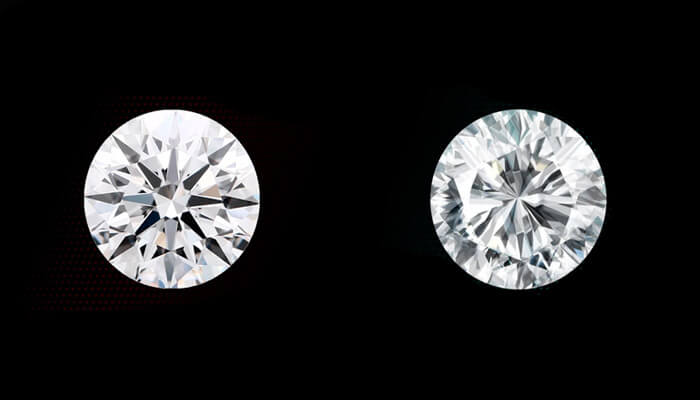You know how the old saying goes – it’s best to you’re your face towards nature. For a long time society relied on natural resources. They were deemed as the only option in many fields. They even were, for a while. But with time, we evolved. Times changed. Technology and science have come a long way even when we compare today with the last two decades. If we go back for half a century one could argue that we live in a futuristic society. That’s right. The Internet, smartphones, space exploration, and robotics have taken this society up a notch.
Today, we’re not going to talk about any of those things. Instead, we’re going to be a little bit more focused on one particular natural element – carbon. What’s your first association when you think of carbon? For us, it’s diamonds. For a long time, the only possible way you could buy a piece was to get the real deal. Today, matters are a bit different. There are plenty of lab made diamonds that can be an ideal replacement for natural stones.
Of course, many people are still skeptical about them. Today, due to it, some of the prejudice tied to them will be broken down by us for you. So, let’s talk about what’s the difference between these two sorts of diamonds. As you’ll see, they have a few differences, but what’s more vital is that there are more things in common. Once we break down the principal dissimilarities between them, you’ll be viewing the lab made diamonds differently. Let’s start.
The Origin
Basics first. The two stones are different in the way they’re made. Nature-born ones are produced by our planet. Under ideal conditions, that include immense pressure and high temperatures. Beneath Earth’s crust carbon atoms are rearranged and give us these precious rocks. Once the lower levels of soil start breaking down under these circumstances, the precious stones are broken into smaller pieces and are later mined in areas recognized as being fertile soil for them.
With the novelty of synthetic rocks, the creating ordeal is almost identical, with rocks being artificially created inside of a lab. This way of making diamonds is dubbed chemical vapor deposition. The initial part of the ordeal is a small piece of original rock, or pure carbon, that is used as a seed from which the diamond will be born. It can be compared to 3D printing, as you make a rock with only a minimal quantity of carbon. Once you breed it to the desired size, you cut it the same way as the real thing. The first stone of this kind was made more than fifty years ago. But it wasn’t possible up until now to reach the quality heights of real stones, which would be perfect for jewelry.
Cost
Here is a big difference. If you’re hunting for a ring, you’ll be focused on this particular difference. What makes them so valuable is that they’re rare. You can only find them in a few corners of the planet. The majority of natural pieces are not even legally mined and have a difficult story behind them. Ethically, many are not even deemed clean. Similarly to Bitcoin, it is known that the resource of natural-born stones is limited. So, when you add rarity, limited supply, and the logistics behind mining them together, you understand why they’re so costly. We’re not even going to mention they’re good looks. This is where lab made diamonds come into play. A clean product in every sense of the word. What’s even better is that they’re not nearly as expensive. On average an artificial diamond costs 50% less than the real deal.
Strength And Quality
With these rocks, the focus needs to be on their original quality and strength. The durability is legendary with ties to diamonds. Age can’t hurt them; they don’t get old similarly to Dorian Gray. If we view the materials our good planet has granted us, this one is the hardest. So, we know that the natural pieces are strong. How does the lab product compare? They’re one of a kind. The artificial stone is made out of carbon. You know what this means – they’re one of a kind in this department. What this means is that they’re equally strong.
How About Clarity?
Another important aspect when speaking of diamonds is the tale of their clarity. Here the principles of grading come into play. They’re identical for both kinds. It’s a common practice by both IGI and GIA which are American and International gemologist institutions. Now you know – there are no double cubits with grading of diamonds. All of this begs the question – tell us about the difference. You won’t find any. The 4C of the diamond business (carat, color, cut, and clarity) are identical for both types. Rocks made in a laboratory do not trail back behind the real ones. Not even for an inch.
Coloration
As we said in the paragraph above, the same scales are used for both clarity and color, the two most important Cs. The rest of the deal remains the same too. Talking about the color you won’t know the difference. Even professionals will have that issue. People who are seeking their engagement ring, or rock for any ring, usually seek the colorless kind. The grades in question usually are grades between G and J. But, if you want anything between D and F, the faultless color, you’ll be aiming at rarified air and quite costly pieces. In this department, an artificial diamond can be as colorless as any, but quite less expensive.
How to Tell the Difference?
This is a good and hard inquiry. As an amateur, you won’t have the skill or resources to recognize it. The eye test will not show you what’s different. They are so alike that ‘synthetic’ as a term no longer describes them. Lab made diamonds are viewed as close to the real deal as possible. Only professional gemologists can trace the origin. What they use to view the realness is the nitrogen test. Real rocks have traces of this substance on them. When it comes to artificial ones, they are made without them. This part of the equation is not used in a laboratory. It would seem that in some departments, nature can’t be mimicked to its fullest, nor should it be.



